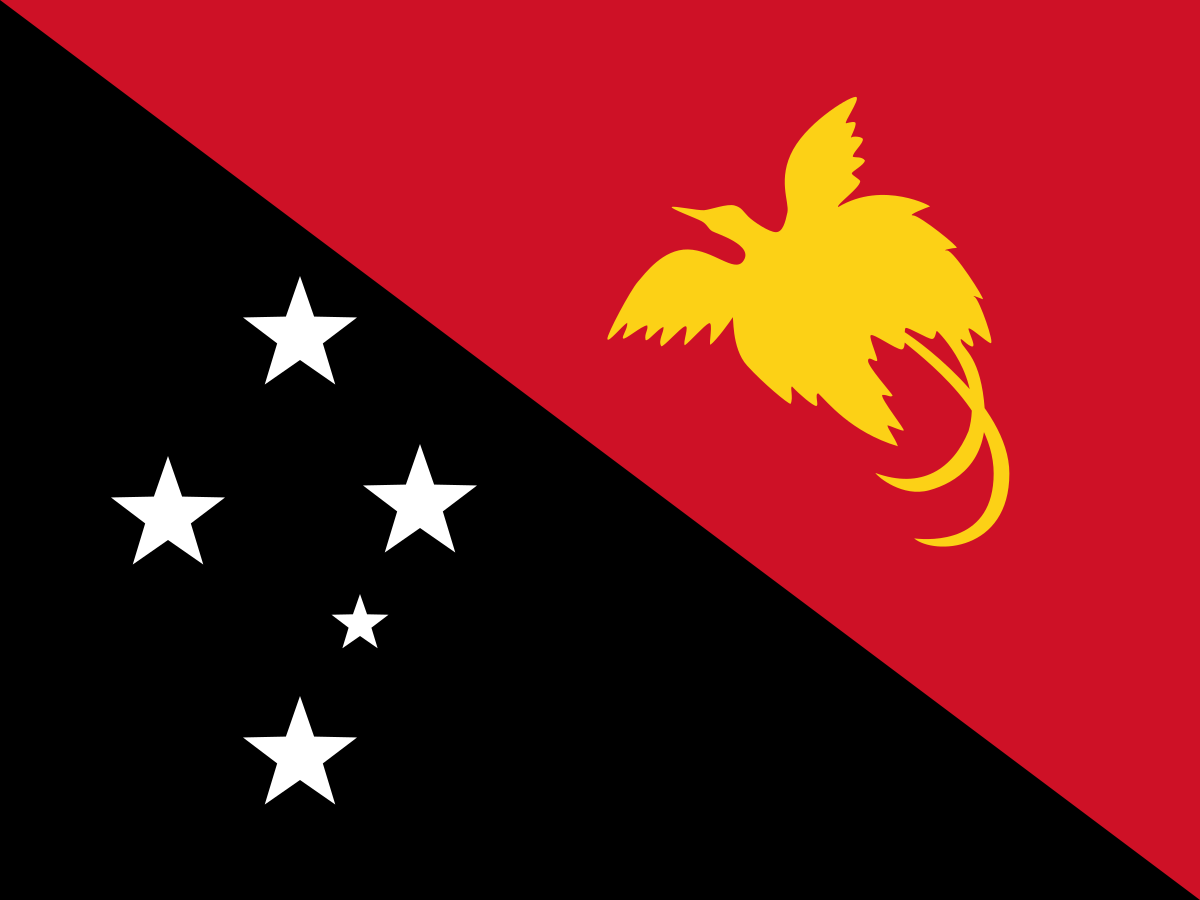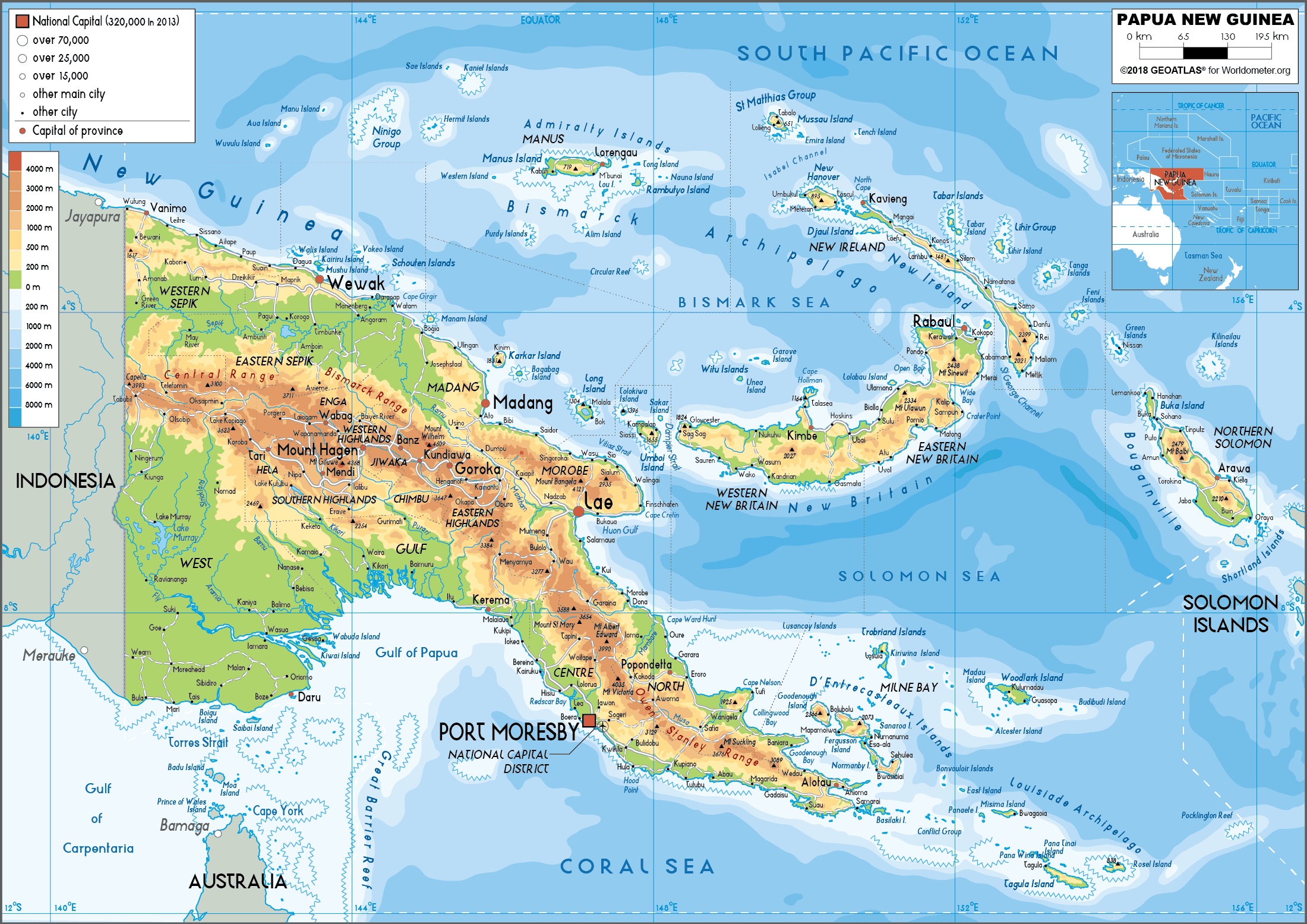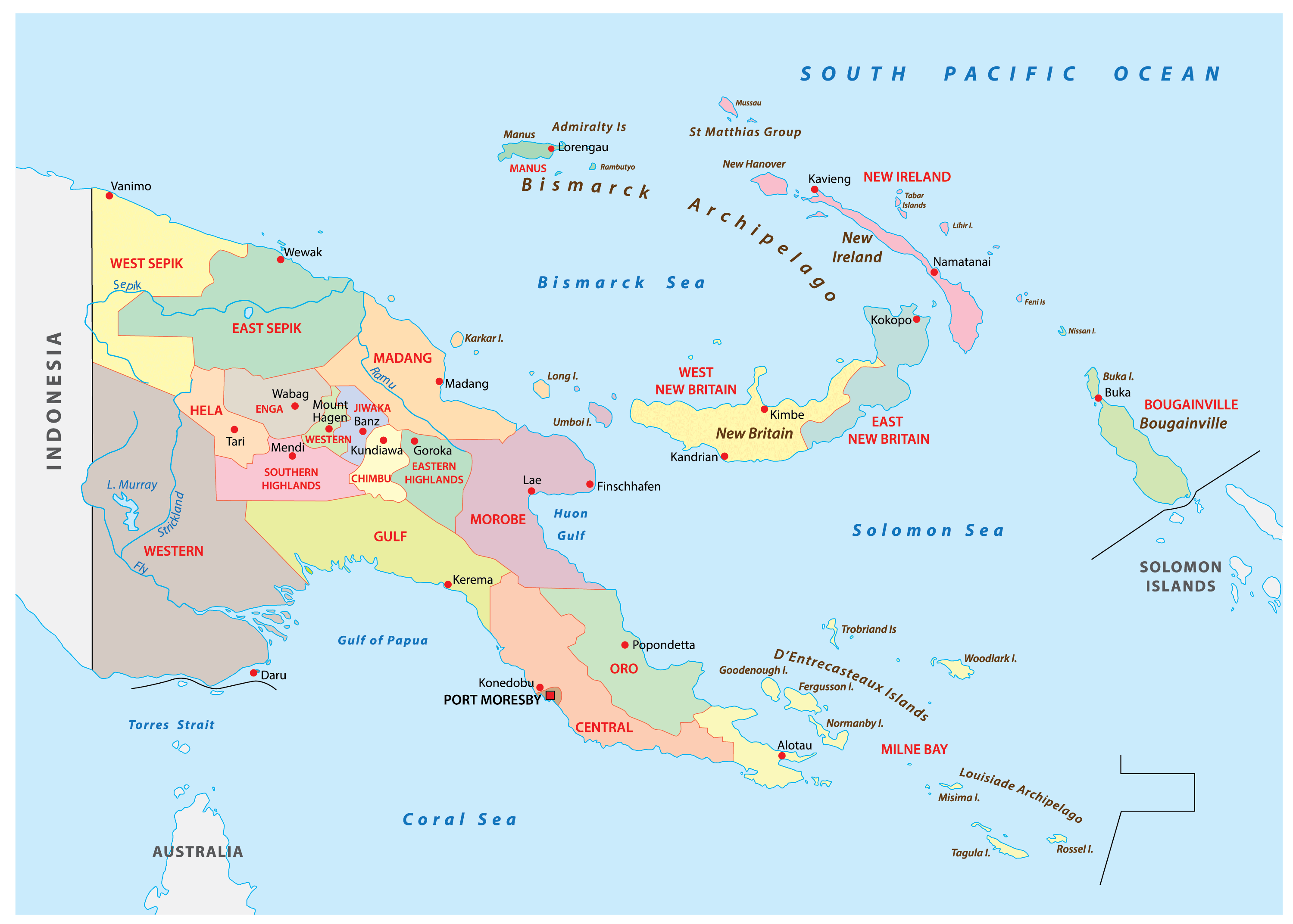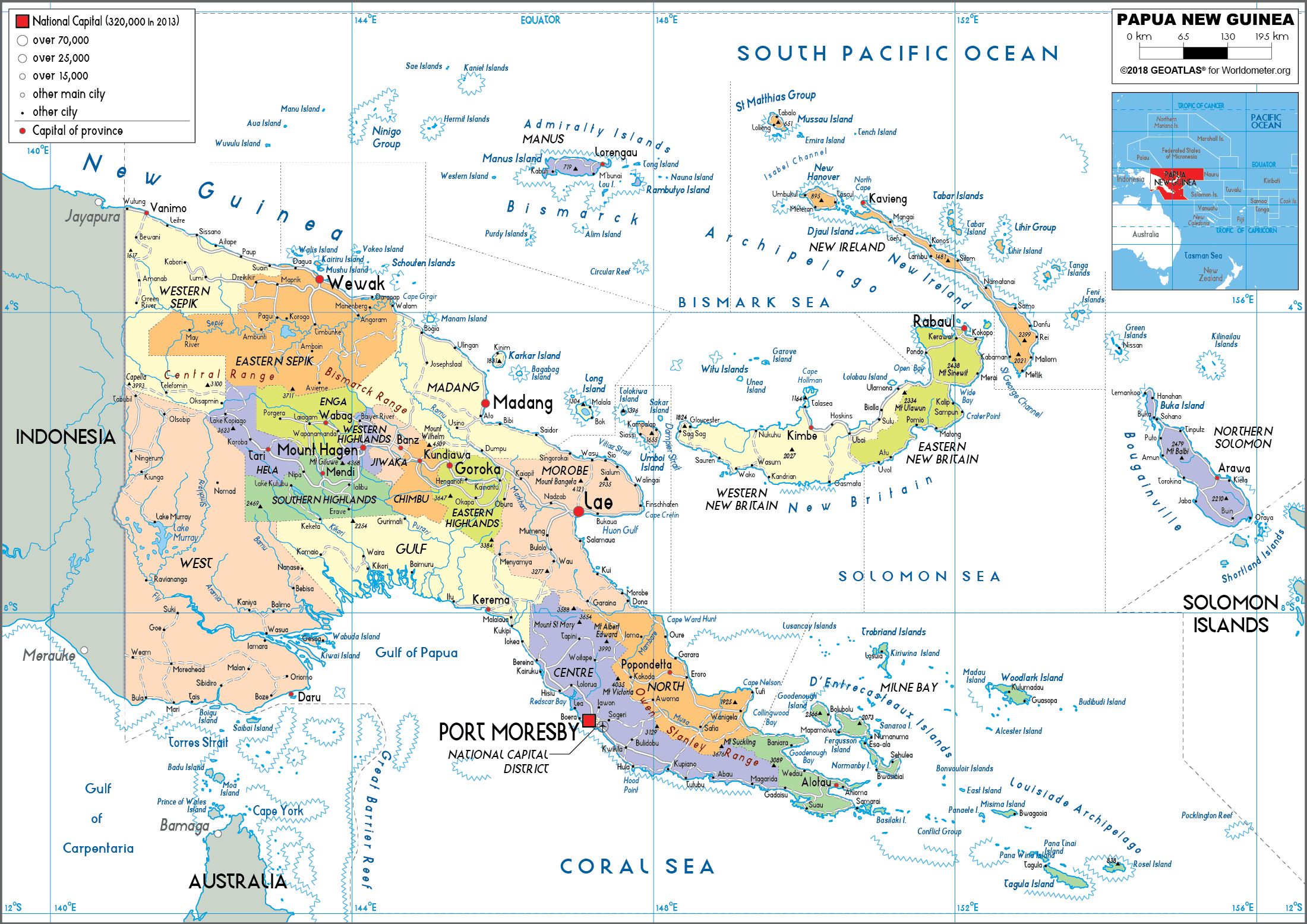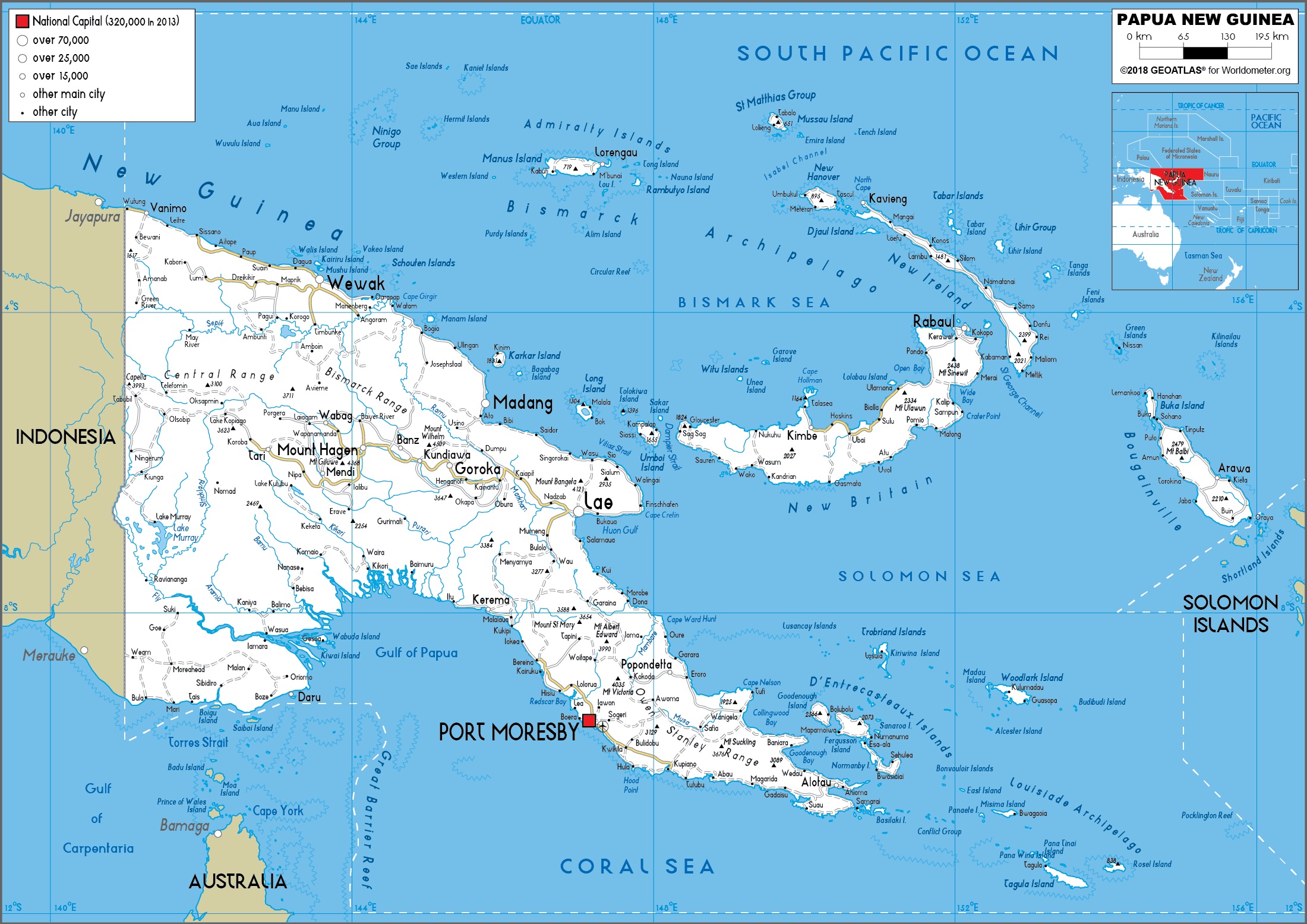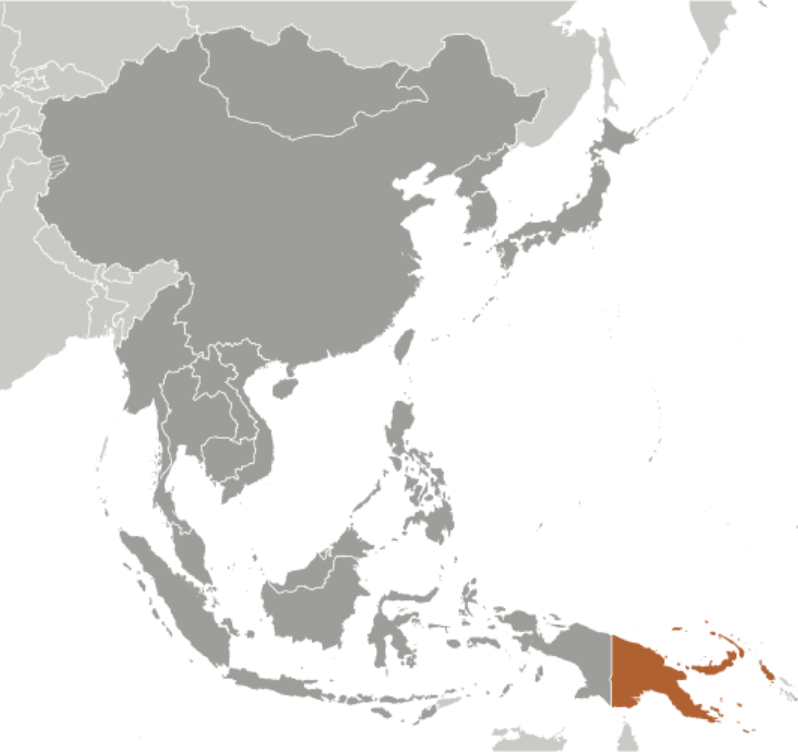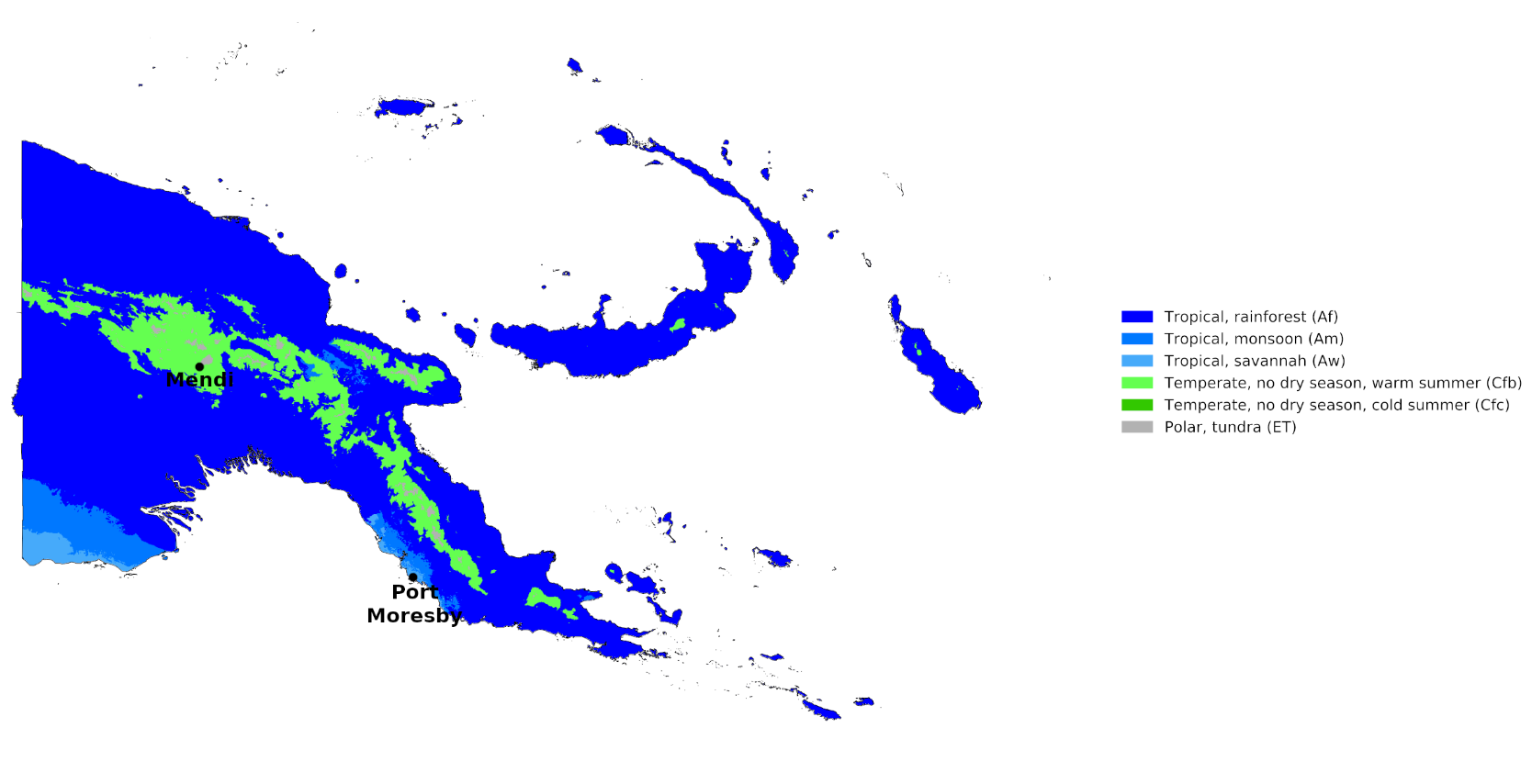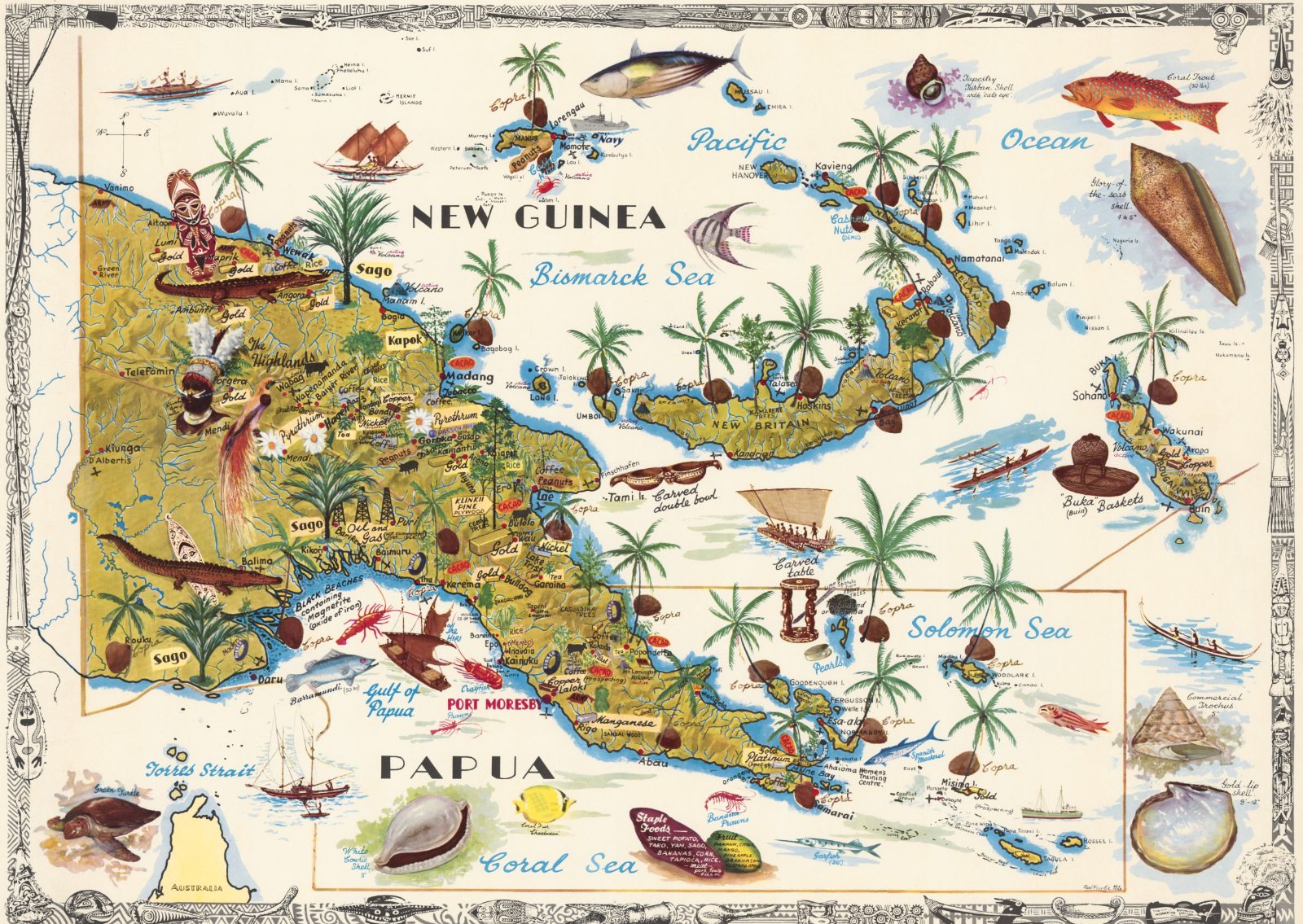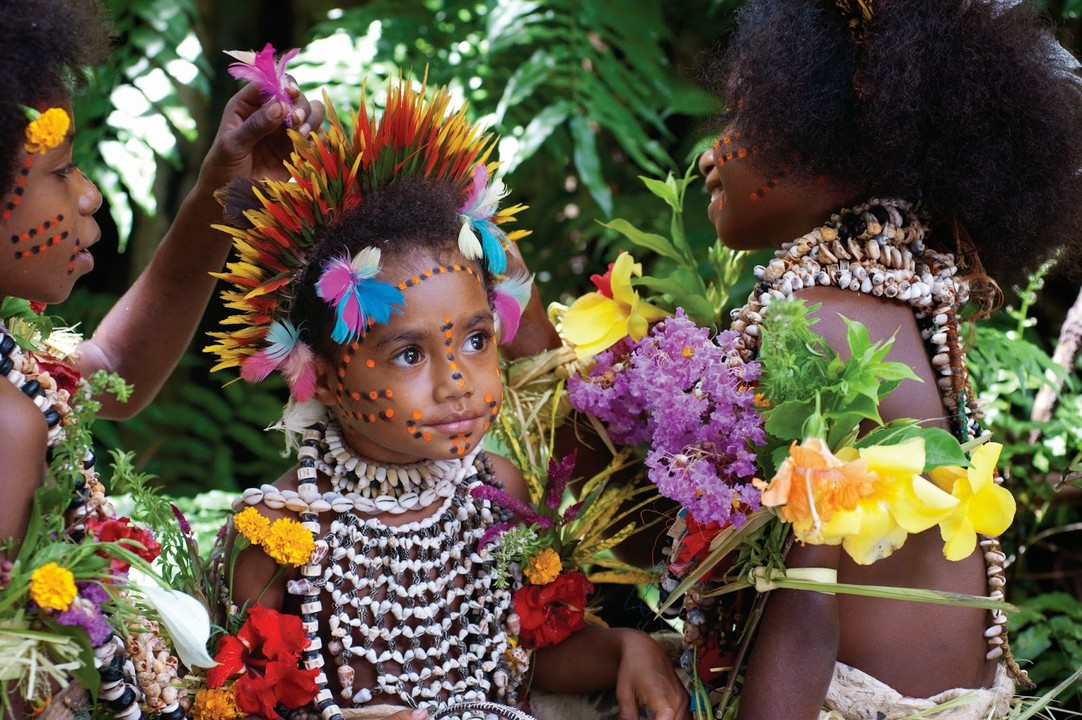Papua New Guinea Map - Regions, Cities, Attractions & More
Find your way around Papua New Guinea with our easy-to-use maps. Discover key cities, national parks, and must-see attractions for an unforgettable trip.
Author:Michael RachalReviewer:Finn WildeFeb 19, 20251K Shares526.8K Views

Papua New Guinea (PNG), located in the southwestern Pacific Ocean, is a country known for its rich cultural diversity, stunning natural landscapes, and complex history.
Home to over 800 indigenous languages and a variety of tribes, PNG offers a unique blend of traditional customs and modern influences. This article will take you through the key aspects of the country, including its geography, history, economy, culture, and more.
Quick Facts About Papua New Guinea
| Aspect | Details |
| Capital | Port Moresby |
| Area | 462,840 km² (178,700 sq mi) |
| Population | 10.33 million (2023) |
| Dialing Code | +675 |
| Currency | Kina (PGK) |
| Languages | English, Tok Pisin, Hiri Motu, and over 839 indigenous languages |
| Time Zone | UTC+10, UTC+11 |
| Religion | 95.5% Christian (64.3% Protestant, 26% Catholic) |
Location And Geography Of Papua New Guinea
Papua New Guinea is an island nation located in Oceania, occupying the eastern half of the island of New Guinea and encompassing over 600 smaller islands. Its diverse geography is a result of its complex geological history, shaped by volcanic activity and the collision of tectonic plates.
The island is dominated by the rugged New Guinea Highlands, a spine of mountains running its length. These highlands are characterized by steep slopes, deep valleys, and lush rainforests, home to a remarkable diversity of flora and fauna. The Bismarck Range and the Central Range are prominent features, with Mount Wilhelm, at 4,509 meters, being the highest peak.
Coastal regions exhibit a variety of landscapes, including mangrove forests, sandy beaches, and coral reefs. The country is also prone to seismic activity, with earthquakes and volcanic eruptions occurring regularly.
Several major rivers traverse the country, playing crucial roles in the ecosystem and the lives of the people. The Sepik River, renowned for its unique ecosystem and cultural significance, is a major waterway. Other important rivers include the Fly River, one of the longest rivers in Papua New Guinea, and the Ok Tedi River.
The climate of Papua New Guinea is predominantly tropical, characterized by high temperatures and humidity. However, there is significant variation across the country. The lowlands experience hot and humid conditions year-round, while the highlands have a more moderate climate with cooler temperatures.
Flag Of Papua New Guinea
The flag of Papua New Guinea is a symbol of the country's rich cultural heritage. The black and red colors represent the land, while the yellow diagonal stripe symbolizes the sun. The five-pointed stars represent the five regions of the country: New Guinea Island, New Britain, New Ireland, Bougainville, and the islands of the Bismarck Archipelago.
Maps Of Papua New Guinea
Physical Map Of Papua New Guinea
Since Papua New Guinea is known for its rugged terrain, tropical rainforests, and volcanic activity, a physical map would help understand the physical context of the country. This type of map would highlight:
- Mountain Ranges: PNG has several mountain ranges, including the Owen Stanley Rangein the southeast and the Bismarck Rangein the central part of the country.
- Rivers and Lakes: Major rivers like the Sepik River, Fly River, and Ramu Rivercould be highlighted, along with the few lakes in the country.
- Volcanic Activity: The Tavurvur Volcanonear Rabaul or other active volcanic sites in the New Britain area could be marked.
- Coastlines and Islands: The map would show the coastline and offshore islands, providing a clearer view of PNG’s archipelagic structure.
- Forests: PNG is known for its tropical rainforests, and a physical map can show the vast forested regions, which are key to the country’s biodiversity.
Map Of Papua New Guinea With Cities
Papua New Guinea (PNG) is an island nation with diverse geographical features and a wide range of cities and towns. Some of the most significant cities include:
Port Moresby: The capital and largest city, located on the southern coast. It serves as the political, economic, and administrative center of the country. Port Moresby is home to the government institutions, embassies, and the country's busiest airport, Jacksons International Airport.
Lae: Situated on the northeastern coast, Lae is the second-largest city in PNG and an important industrial hub. It is a vital gateway for trade, especially for exports such as timber, coffee, and palm oil. Lae is also known for its proximity to the Huon Gulf and its agricultural landscape.
Mount Hagen: Located in the Western Highlands, Mount Hagen is one of the country's key urban centers. Known for its vibrant market culture and scenic beauty, it serves as a gateway to PNG’s highland regions. Mount Hagen is also famous for hosting the annual Mount Hagen Cultural Show, a celebration of PNG's cultural diversity.
Madang: Situated on the northern coast of the island, Madang is an attractive city with a beautiful waterfront and an important center for tourism and commerce. The city is close to some of the country's best dive sites and natural attractions, including pristine coral reefs and rainforests.
Goroka: Located in the Eastern Highlands, Goroka is known for its cultural importance, particularly the Goroka Show, which showcases the country’s diverse tribal heritage. The city is also an important administrative and economic center for the Highlands region.
Rabaul: A historically significant city on the island of New Britain, Rabaul is famous for its role as the former capital of East New Britain province and its proximity to active volcanoes like Mount Tavurvur. The city is an important gateway for tourism and trade in the region.
Kokopo: Located near Rabaul, Kokopo is the current capital of East New Britain province. The city serves as a commercial hub and a key point for exploring the surrounding natural attractions, including volcanic landscapes and pristine beaches.
Wewak: Situated on the northern coast in East Sepik Province, Wewak is a small yet significant port city with a history rooted in World War II. It is an important regional center for trade, agriculture, and tourism.
Alotau: The capital of Milne Bay Province, Alotau is located on the southeastern tip of the mainland. It serves as a gateway to the stunning coral reefs, beaches, and historical sites of Milne Bay, making it popular among tourists.
Political Map Of Papua New Guinea
Papua New Guinea is divided into four main regions, each of which encompasses a distinctive culture, language, and geography. These regions are:
- The Highlands Region: This region is known for its mountainous terrain, with some of the highest peaks in PNG, including Mount Wilhelm. The Highlands are home to a significant portion of the country’s population, particularly among the numerous indigenous groups, each with unique traditions and languages.
- The Southern Region: Encompassing the nation's capital, Port Moresby, this region includes the coastal lowlands and the islands off the southern coast. It features a tropical climate and is the economic and political center of the country.
- The Momase Region: Located on the northern coast, this region includes the provinces of Morobe, Madang, and East Sepik. The region is marked by lush rainforests and large rivers, with some of the most diverse ecological systems in the country.
- The Islands Region: This region consists of the numerous smaller islands that make up Papua New Guinea, including the Bismarck Archipelago, the Solomon Islands, and the New Guinea islands. The Islands Region is noted for its remote beauty, cultural practices, and active volcanoes.
Road Map Of Papua New Guinea
While Papua New Guinea is known for its rugged and mountainous terrain, transportation infrastructure is continually improving, though it still faces several challenges.
A Road Map of Papua New Guineaillustrates the developing road network, with key routes connecting major urban centers like Port Moresby, Lae, and Mount Hagen.
However, the country’s challenging geography, including steep mountain ranges and dense rainforests, makes road traveldifficult in rural and isolated areas.
- Key Roadways: The Highlands Highway, which stretches from the coastal city of Lae to the interior Highlands, is the most significant road in the country. It plays a central role in connecting the highland provinces with the rest of the country, despite being subject to frequent weather-related disruptions.
- Air Travel: Given the geographical challenges, air travel is an essential mode of transport for many people in PNG. Smaller regional airports service remote communities, connecting them with larger cities.
Simple Map Of Papua New Guinea
A Simple Map of Papua New Guineaprovides a basic overview of the country's geography. This type of map typically highlights the national borders, major rivers, mountain ranges, and the locations of key cities, such as Port Moresby and Lae. Simple maps are helpful for those looking to understand the broader landscape and general layout of PNG.
Locator Map Of Papua New Guinea
A Locator Map of Papua New Guineahelps to place the country within the wider context of the Pacific region. It shows the country’s location relative to neighboring islands and nations, such as Australia to the south and Indonesiato the west.
The map provides a visual representation of PNG’s strategic position within Oceania, a region characterized by a vast expanse of islands, archipelagos, and oceanic waters.
Climate Map
A Climate Map of Papua New Guineaprovides an essential overview of the country’s varying climates, which range from tropical to temperate depending on the region. The map outlines the distinct climate zones:
- Coastal Areas: Most of the coastal areas, including Port Moresby and Lae, experience a tropical climate, characterized by high temperatures year-round, with a wet season from December to March. The tropical climate supports lush rainforests and biodiversity.
- Highlands: The central highland regions, such as Mount Hagen and Goroka, enjoy a temperate climatedue to their elevation. The cooler temperatures make this region suitable for agriculture, including the cultivation of coffee and other crops.
- Islands: The Islands Region, which includes the Bismarck Archipelago and other smaller islands, has a tropical maritime climate, with warm temperatures and high humidity throughout the year, along with seasonal rainfall patterns.
Understanding the diverse climates of PNG is crucial for travelers, as it influences everything from agriculture to tourism activities.
Tourism Attractions Map Of Papua New Guinea
Papua New Guinea (PNG) offers diverse natural and cultural attractions. A Tourism Attractions Map helps travelers explore the country’s highlights, from scenic landscapes to historical sites.
Key Attractions:
- Rabaul: Famous for volcanic landscapes, WWII remnants, and diving spots.
- Kokoda Track: A challenging 96-km trek with WWII historical significance.
- Tufi: Known for fjords, coral reefs, and eco-tourism.
- Madang: A diving paradise with coral reefs and marine life.
- Mount Hagen: Cultural hub with vibrant markets and the Mount Hagen Cultural Show.
- Kuk Early Agricultural Site: UNESCOsite showcasing ancient agriculture.
- National Museum (Port Moresby): Explore PNG’s cultural history and art.
- Bismarck Archipelago: Pristine beaches, coral reefs, and indigenous culture.
- Loloata Island: Resort island near Port Moresby with diving opportunities.
Papua New Guinea Places To Visit
Papua New Guinea is a paradise for adventurous travelers, offering a range of attractions that showcase its natural beauty, rich history, and unique cultures.
However, the country’s remote and rugged nature means that tourism is often limited to those who are willing to venture off the beaten path.
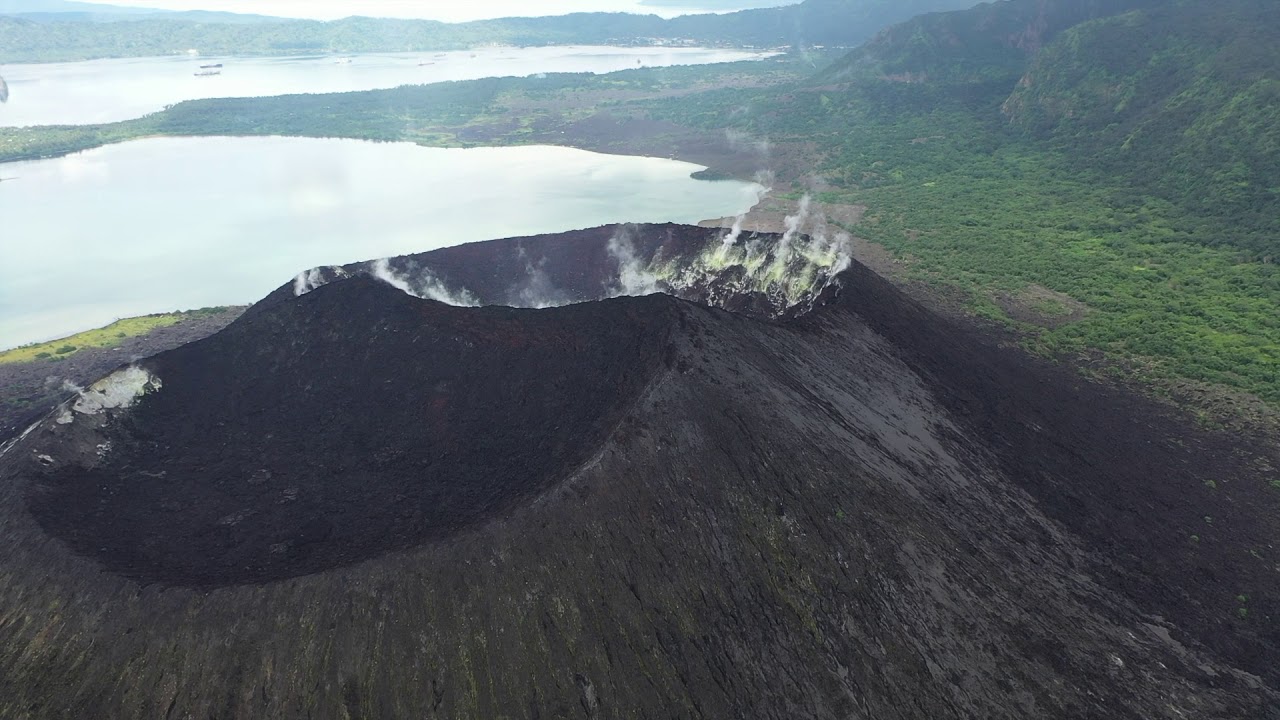
Tavurvur, Rabaul Volcanic Complex, East New Britain, Papua New Guinea
Tavurvur Volcano
Located near Rabaul in East New Britain, Tavurvur is an active volcano that last erupted in 1994. It’s an iconic natural landmark, and visitors can explore the surrounding area, learning about the volcanic history while enjoying stunning views of the landscape.
Varirata National Park
Situated just outside Port Moresby, Varirata National Parkoffers a fantastic experience for nature lovers. Known for its rich biodiversity, the park is particularly famous for birdwatching, including sightings of the elusive Papua New Guinea bird of paradise. There are hiking trails and scenic viewpoints that make it a great escape from the city.
The Rainforest Habitat
Papua New Guinea’s rainforest habitats are vital ecosystems, rich with biodiversity. One of the best places to experience these habitats is at Tufiin Oro Province, which offers stunning trekking routes through pristine rainforests, as well as a chance to observe unique wildlife, including exotic birds and rare plant species.
Parliament Haus
Located in Port Moresby, Parliament Hausis an architectural masterpiece that houses the National Parliament of Papua New Guinea. The building’s distinctive design and cultural symbolism make it an important landmark. Visitors can explore the grounds and learn about the country’s political history.
Tari Basin
The Tari Basin, situated in the Southern Highlands, is known for its fascinating archaeological sites and as the home of the Huli people. This area is also famous for the Huli Wigmen, known for their elaborate headdresses made from human hair. The Tari Basin offers a glimpse into the traditional way of life of these highland cultures.
JK McCarthy Museum
Located in the capital city of Port Moresby, the JK McCarthy Museumis a great place to learn about Papua New Guinea’s history, culture, and natural heritage. The museum features exhibits on the indigenous people, traditional art, and the country’s colonial past, as well as its wildlife.
Volcanology Observatory
The Volcanology Observatoryin Rabaul provides an opportunity to learn about the region's active volcanic systems. It offers educational displays and live updates on the current volcanic activity, as well as breathtaking views of the surrounding area, including the Tavurvur volcano.
Muschu Island
Off the coast of the mainland, Muschu Islandin the Sepik Province is a tranquil getaway, known for its crystal-clear waters, beautiful beaches, and rich cultural heritage. The island is perfect for snorkeling, diving, and exploring traditional village life.
Port Moresby Nature Park
The Port Moresby Nature Parkis an educational and conservation-focused attraction located just outside the capital. It’s home to a variety of wildlife species, including many endemic to Papua New Guinea. The park offers walking trails, birdwatching opportunities, and exhibits on the country’s rich flora and fauna.
Lae War Cemetery
The Lae War Cemeteryis a solemn and significant historical site, dedicated to those who lost their lives during World War II. The cemetery is meticulously maintained and serves as a place of remembrance for both Australian and Papua New Guinean soldiers who fought in the Pacific War. It’s a peaceful location for reflection and honor.
Digital Mapping And Technological Integration In PNG
Digital mapping has transformed the way Papua New Guinea is understood and accessed. Technologies such as GIS and satellite imaging offer real-time data for various applications:
Conservation And Environmental Management
- Mapping endangered habitats and biodiversity hotspots.
- Monitoring deforestation and climate change impacts.
Urban And Infrastructure Development
- Designing sustainable urban growth plans.
- Enhancing disaster response systems for earthquakes and floods.
Accessibility For Locals And Tourists
- Mobile apps provide offline maps for remote areas.
- Digital platforms improve resource accessibility and navigation.
Why Understanding Papua New Guinea Maps Matters
Maps are more than tools for navigation; they are gateways to understanding the essence of Papua New Guinea. They:
- Facilitate educational initiatives and cultural preservation.
- Support sustainable tourism by highlighting eco-friendly destinations.
- Aid policymakers in addressing developmental challenges and regional disparities.
Fun Facts About Papua New Guinea
Diverse Languages: Papua New Guinea is the most linguistically diverse country in the world, with over 800 languages spoken.
Unique Cultural Heritage: With more than 1,000 distinct cultural groups, PNG is home to a wide range of customs, dances, and traditional clothing.
Oldest Agricultural Site: The Kuk Early Agricultural Sitein the Highlands is one of the oldest known agricultural sites in the world, dating back over 7,000 years.
No Snakes: Despite its tropical climate, some areas in Papua New Guinea have very few snakes, making it safer for hikers.
Home of the Kokoda Track: The Kokoda Track, a 96 km historical trail, was the site of a significant WWII battle and is now a popular trekking destination.
Bird of Paradise: The Bird of Paradise, which has bright colors and an elaborate mating dance, is one of the country’s most iconic animals and has symbolic significance.
World War II History: Papua New Guinea was a key battleground during World War II, and many historical sites and artifacts remain throughout the country.
Rugby Obsession: Rugby league is the most popular sport in PNG, and the country has one of the most passionate fan bases, especially for the State of Origin matches.
Pristine Diving: PNG is considered one of the top diving destinations globally, with pristine coral reefs and diverse marine life, especially in areas like Madangand the Tufi Fjords.
Wildlife Haven: The country is home to unique species, including the tree kangaroo, cassowary bird, and various rare frogs, making it a haven for wildlife enthusiasts.
FAQ's About Papua New Guinea Map
Is New Guinea Part Of Australia Or Asia?
New Guinea is a huge island in the Pacific Ocean, north of Australia and south-east of Asia. It is a portion of the Australian Plate known as Sahul, which was formerly part of the supercontinent Gondwana.
Are There Maps Highlighting PNG’s Linguistic Diversity?
Yes, cultural maps often depict linguistic zones and tribal areas, showcasing PNG’s unmatched diversity.
How Accurate Are Digital Maps Of Papua New Guinea?
Digital maps are generally accurate for major cities and landmarks, but remote areas may lack detailed data. Always cross-check with local sources.
Is Papua New Guinea A Black Country?
The African, Caribbean, and Pacific (ACP) forum includes Papua New Guinea as a member country. Africans who have chosen to make this country their home and place of employment form a strong community there.
Can I Use GPS For Navigation In Papua New Guinea?
GPS is reliable in urban areas but may have limited accuracy in remote regions. Supplement it with physical maps.
Conclusion
Papua New Guinea has a beautiful mountainous landscape that pierces the skyline. The landscapes are very different and dramatic. It's one of the least-visited countries in the world, so it hasn't been changed by mass tourism or built-up areas. This has helped it keep its rugged, natural beauty.
Understanding Papua New Guinea requires a multifaceted approach, encompassing its geography, history, culture, and current realities. By learning more about this remarkable country, we can gain a deeper appreciation for its unique place in the world and the challenges and opportunities that lie ahead.
Jump to
Quick Facts About Papua New Guinea
Location And Geography Of Papua New Guinea
Flag Of Papua New Guinea
Maps Of Papua New Guinea
Tourism Attractions Map Of Papua New Guinea
Papua New Guinea Places To Visit
Digital Mapping And Technological Integration In PNG
Fun Facts About Papua New Guinea
FAQ's About Papua New Guinea Map
Conclusion

Michael Rachal
Author
Michael Rachal believes that luxury lies in the details. With over 20 years of experience in the luxury travel industry, he has crafted hundreds of bespoke itineraries for clients seeking personalized, unforgettable experiences.
Whether guiding clients through private cultural tours or curating culinary journeys with world-renowned chefs, Michael ensures that each trip is tailored to perfection.
His ability to anticipate needs and exceed expectations has earned him a reputation as a leading expert in luxury travel.

Finn Wilde
Reviewer
For Finn Wilde, the wilderness is more than just a destination - it’s a way of life. Over the past decade, he has led multiple expeditions in some of the world’s most remote regions, from the icy fjords of Greenland to the rugged trails of Patagonia.
Finn emphasizes sustainability in all of his adventures, helping participants connect with nature while promoting responsible exploration. His expeditions inspire individuals to explore the great outdoors while fostering a deep respect for the environment.
Latest Articles
Popular Articles
